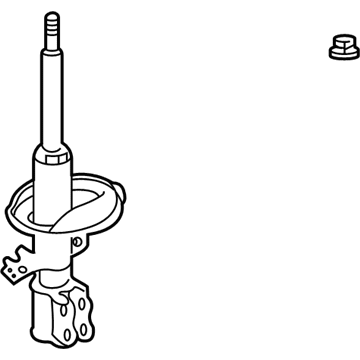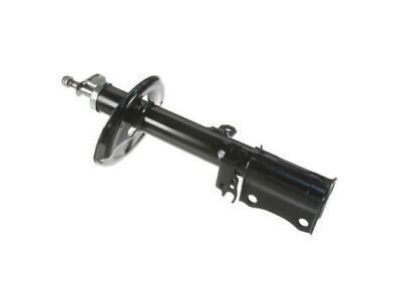×
ToyotaParts- Hello
- Login or Register
- Quick Links
- Live Chat
- Track Order
- Parts Availability
- RMA
- Help Center
- Contact Us
- Shop for
- Toyota Parts
- Scion Parts
My Garage
My Account
Cart
OEM 2000 Toyota Avalon Shock Absorber
Suspension Shock Absorber- Select Vehicle by Model
- Select Vehicle by VIN
Select Vehicle by Model
orMake
Model
Year
Select Vehicle by VIN
For the most accurate results, select vehicle by your VIN (Vehicle Identification Number).
2 Shock Absorbers found

2000 Toyota Avalon Strut, Rear Driver Side
Part Number: 48540-A9070$162.26 MSRP: $229.69You Save: $67.43 (30%)Ships in 1-3 Business DaysProduct Specifications- Other Name: Absorber Assembly, Shock; Rear Left Suspension Strut; Complete Strut Kit; Shock Absorber; Absorber Assembly, Shock, Rear Driver Side
- Manufacturer Note: MARK 48540-AC020
- Position: Rear Driver Side
- Part Name Code: 48540
- Item Weight: 11.60 Pounds
- Item Dimensions: 25.8 x 6.6 x 5.9 inches
- Condition: New
- Fitment Type: Direct Replacement
- SKU: 48540-A9070
- Warranty: This genuine part is guaranteed by Toyota's factory warranty.
 Product Specifications
Product Specifications- Other Name: Absorber Assembly, Shock; Rear Right Suspension Strut; Complete Strut Kit; Shock Absorber; Absorber Assembly, Shock, Rear Passenger Side
- Manufacturer Note: MARK 48530-AC020
- Position: Rear Passenger Side
- Part Name Code: 48530
- Item Weight: 12.50 Pounds
- Item Dimensions: 26.6 x 6.6 x 5.9 inches
- Condition: New
- Fitment Type: Direct Replacement
- SKU: 48530-A9070
- Warranty: This genuine part is guaranteed by Toyota's factory warranty.
2000 Toyota Avalon Shock Absorber
Looking for affordable OEM 2000 Toyota Avalon Shock Absorber? Explore our comprehensive catalogue of genuine 2000 Toyota Avalon Shock Absorber. All our parts are covered by the manufacturer's warranty. Plus, our straightforward return policy and speedy delivery service ensure an unparalleled shopping experience. We look forward to your visit!
2000 Toyota Avalon Shock Absorber Parts Q&A
- Q: How to Service and Repair a Shock Absorber on 2000 Toyota Avalon?A: The repair process for suspension strut requires front wheel removal with 103 Nm (1,050 kgf.cm, 76 ft. lbs.) torque then proceeds with the flexible hose and ABS speed sensor wire harness clamp disconnection. The first step is to disconnect the flexible hose and ABS speed sensor wire harness clamp from the shock absorber after removing the bolt while applying 29 Nm (300 kgf.cm, 22 ft. lbs.) torque. Begin by disconnecting the stabilizer bar link from the shock absorber before moving to disconnect the shock absorber from the steering knuckle through lower-side removal of the 2 nuts and bolts with a torque of 211 Nm (2,150 kgf.cm, 156 ft. lbs.). The shock absorber can then be detached from the steering knuckle. Apply engine oil to the threads of the nut while installation takes place. To detach the shock absorber with coil spring you should first uninstall the 3 nuts while tightening them to 80 Nm (820 kgf.cm, 59 ft. lbs.) then adjust the suspension support during installation according to specified directions. The final stage of installation follows the opposite procedure of removal and requires a wheel alignment check right after finishing work.














